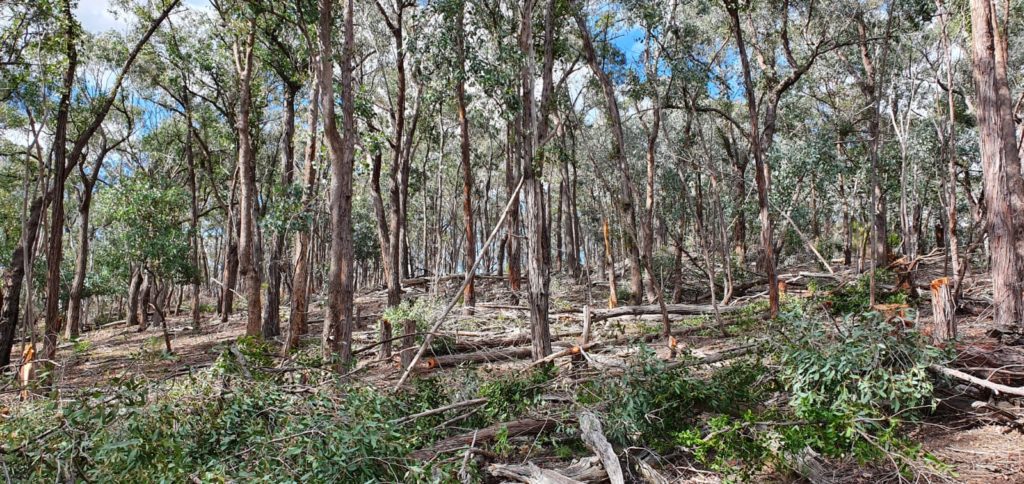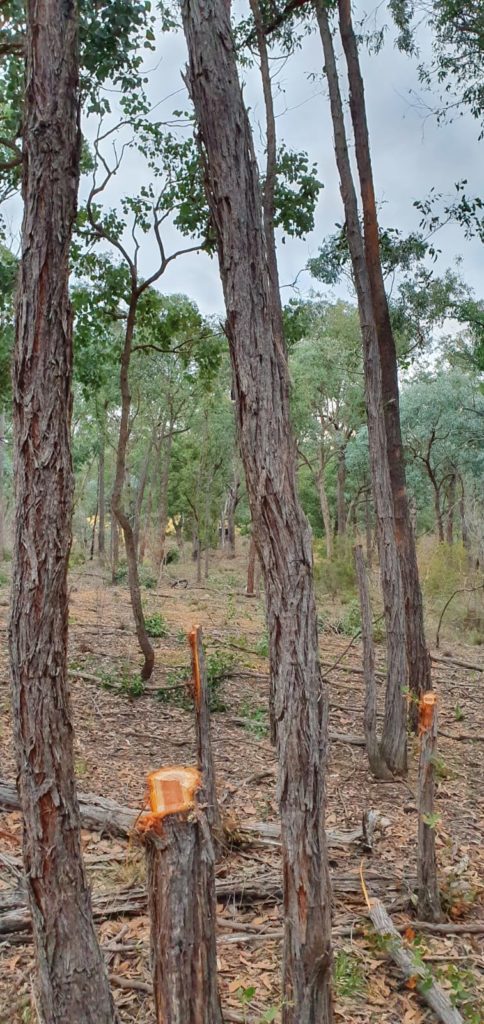
EcoGipps has commenced an eco-thinning project. What exactly is eco-thinning, and why is it useful?
‘Thinning’ refers to the selective removal of trees, primarily undertaken to improve the growth rate or health of the remaining trees. This practice has long been implemented by the logging industry by means of mechanical thinning in order to stimulate faster growth of the remaining trees. Thinning of trees in native bushland can also occur naturally in some tree species and habitat, seeing the weaker trees dying off over decades.
Thinning for ecological benefit, termed ‘eco-thinning’, is a similar concept, with bush habitat conservation and restoration front of mind. Eco-thinning has been debated as controversial; however, its benefits cannot be ignored.
Eco-thinning can have benefits around reducing fire risk, promoting ‘old growth’ forest features, and the practice can allow for a more diverse and multi-storied habitat for wildlife. Learn more about examples of eco-thinning in Western Australian forests here.
In consultation with Blue Devil Consulting, EcoGipps has commenced an eco-thinning project on Block 2. The site for the project was identified in the Conservation Management Plan delivered by Blue Devil Consulting, with soil and tree conditions appropriate for eco-thinning.
The soils in this region of EcoGipps are ‘Solodic’ soils, which can typically see a lack of ground vegetation. A key aim of the eco-thinning project is to promote ground vegetation growth, which assists in both holding the top soil together, reducing erosion, and in boosting soil organic matter, promoting moisture retention and biological activity.



With approximately 50% of the underdeveloped trees thinned, the upper canopy is more open, allowing a greater amount of both sunlight and rainfall to reach the ground story. This creates a more conducive habitat for ground vegetation such as perennial tussock grasses, herbs and shrubs to flourish. Simultaneously, the remaining trees now have the opportunity to mature to a larger size than they would have otherwise.

The felled trees are left in situ, to assist with erosion control. This woody debris also provides diversified habitats for many birds, bats, mammals and even invertebrates.
